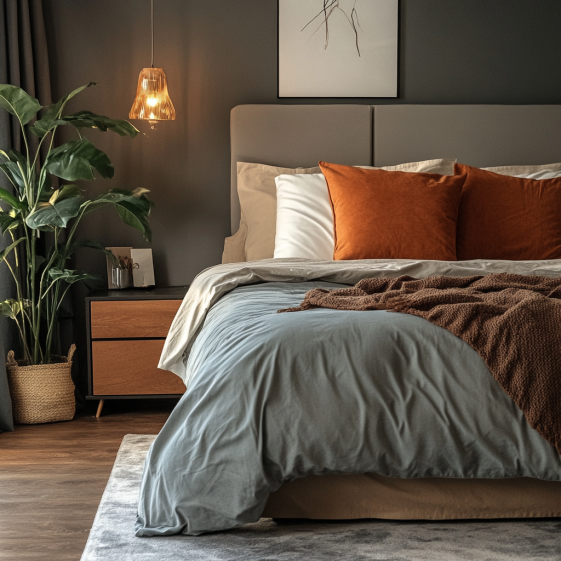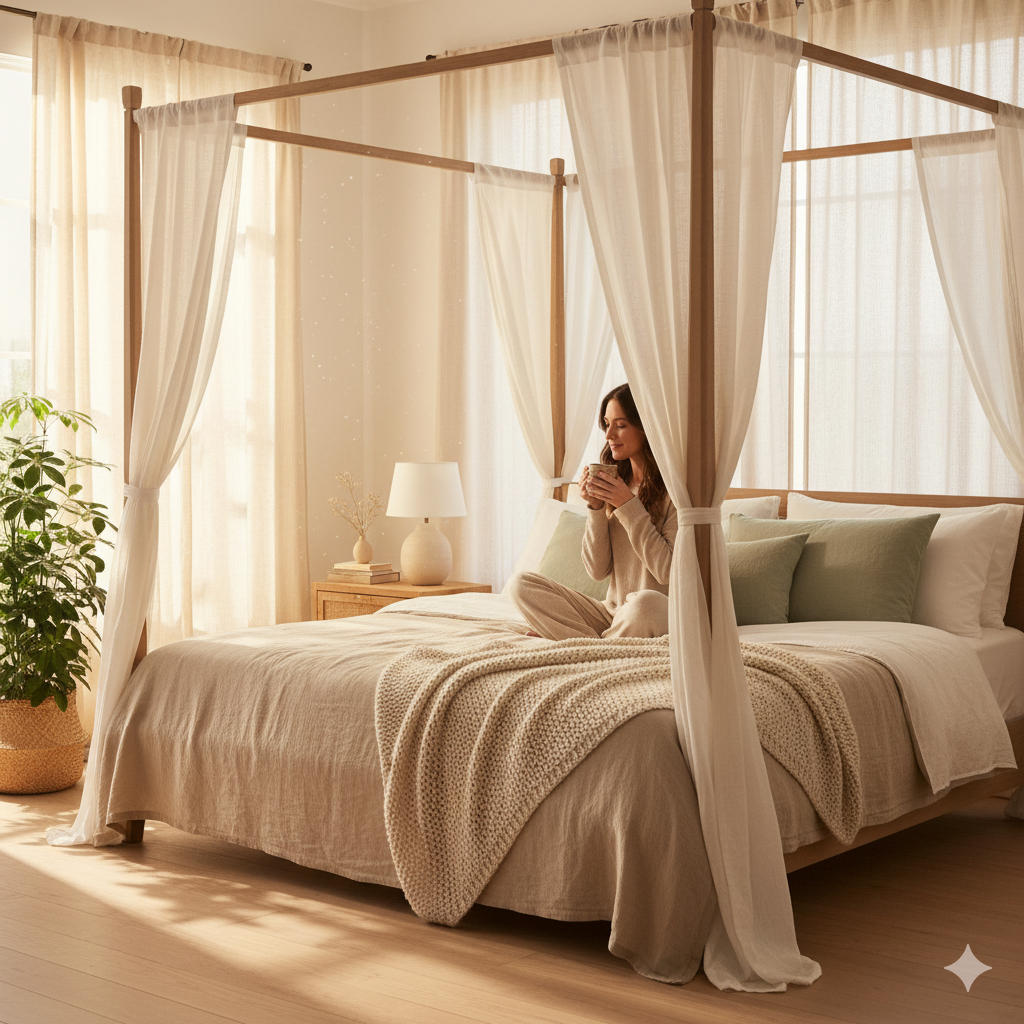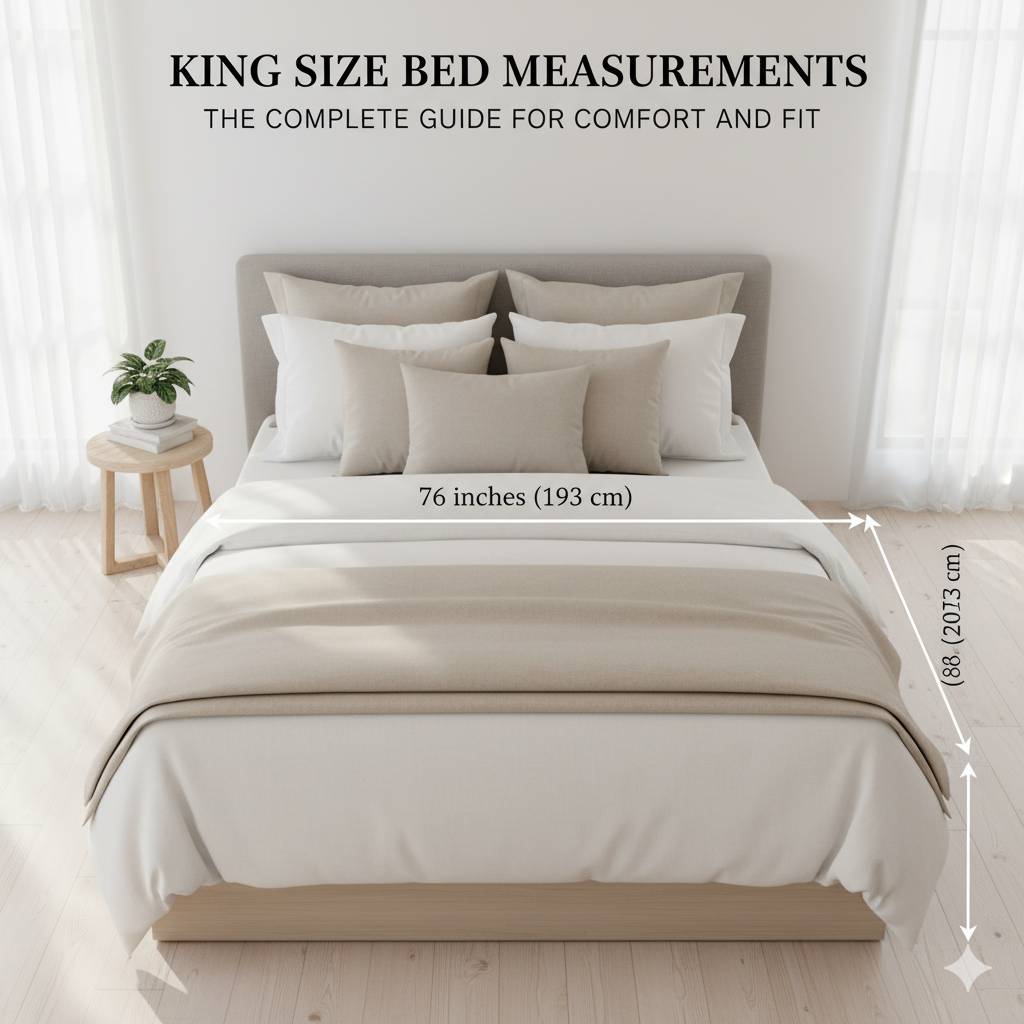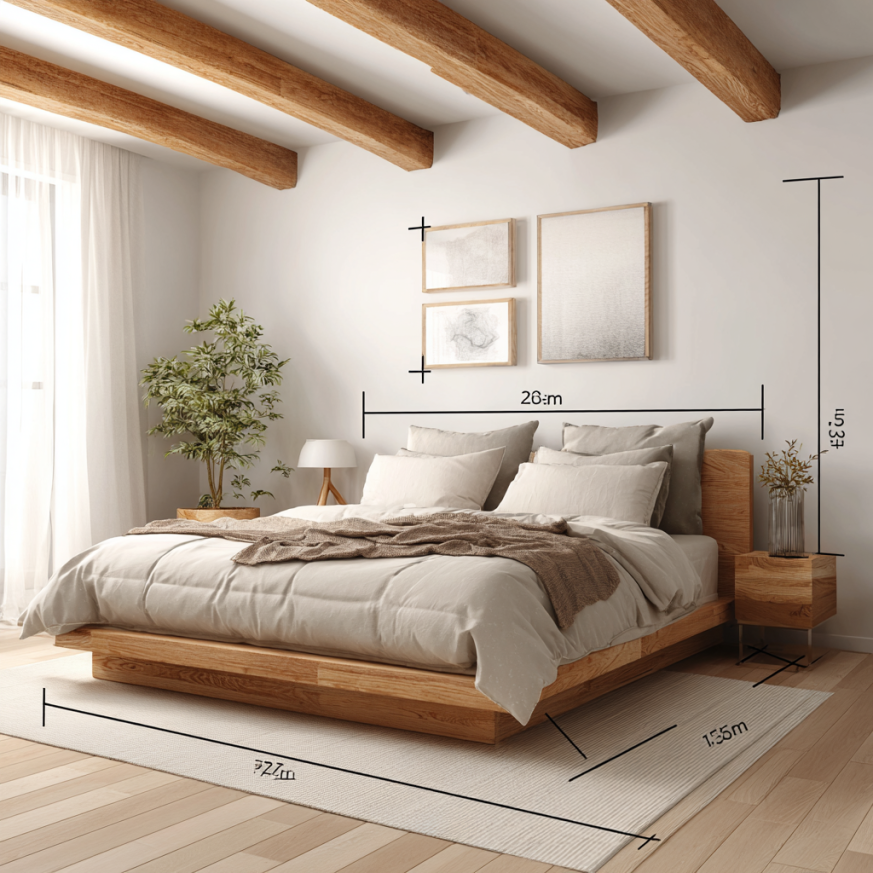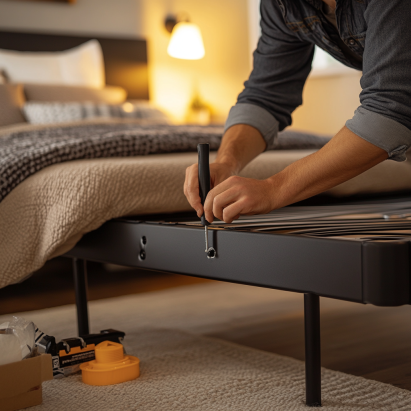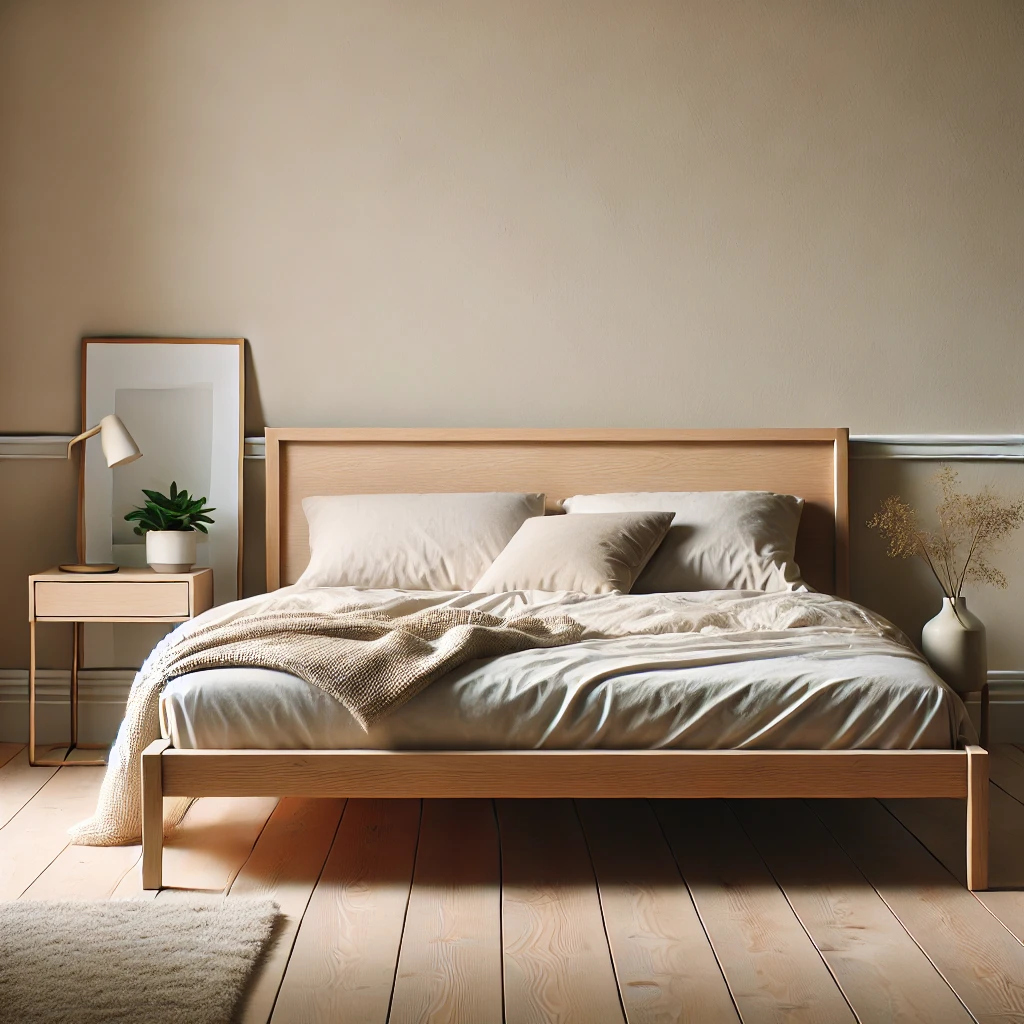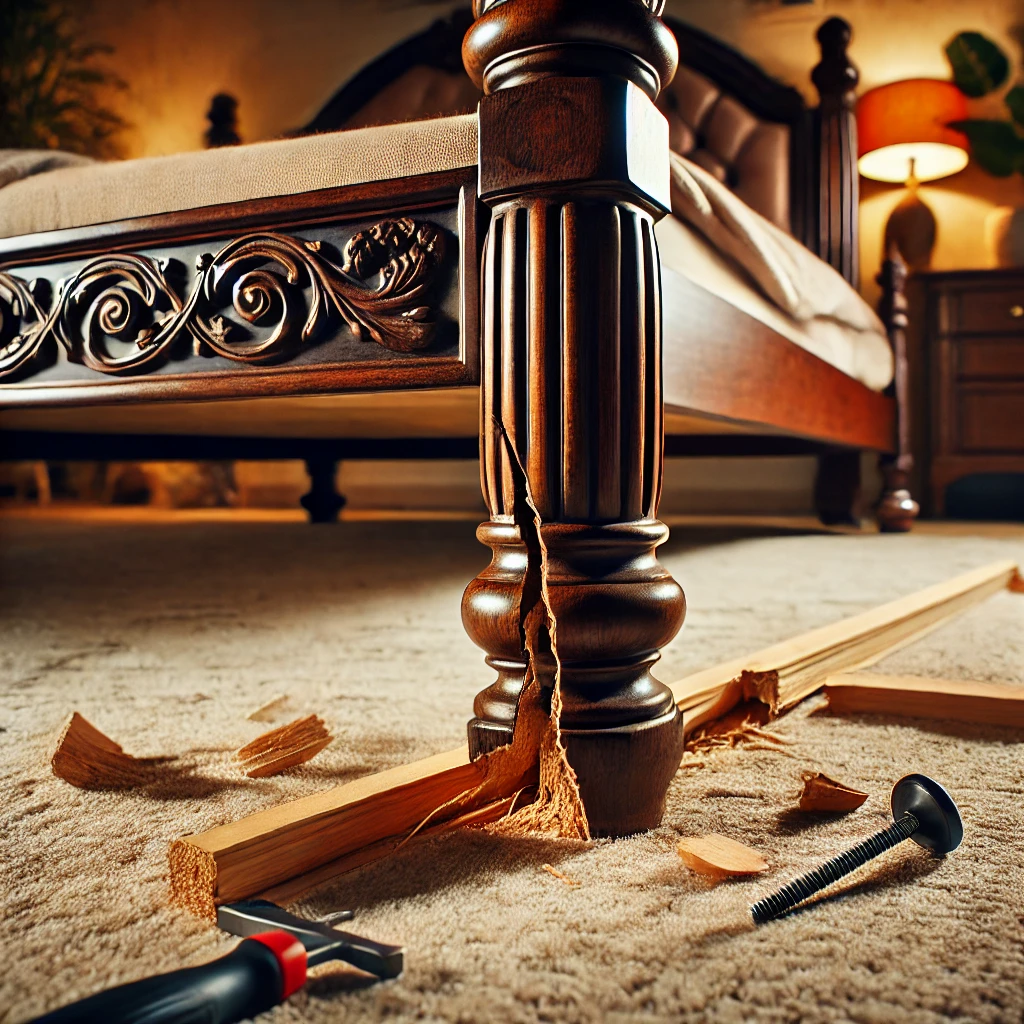Minimalist Canopy Bed Frames: Sleek and Stylish Designs
Minimalist canopy bed frames deliver clean lines, neutral palettes, and clutter‑free comfort—helping you create a serene, modern bedroom in minutes. Choose a streamlined frame, keep accessories intentional, and anchor the room with breathable bedding for a calm, design‑forward retreat.
Key Takeaways on Minimalist Canopy Bed Frames
- Start with a simple, durable frame; avoid ornate details to keep a minimalist look.
- Stick to neutrals and add texture (linen, wood, metal) for warmth without clutter—use minimalist canopy bed frames as the focal point.
- Prioritize function: integrated storage and low profiles increase openness and flow.
- Use soft, layered lighting and 1–2 statement accents to maintain visual calm.
- Pair with breathable, high-quality bedding to support deeper, more restorative sleep.
A minimalist king-size canopy bed offers the perfect blend of simplicity and sophistication, making it an excellent choice for modern bedrooms. With clean lines, neutral tones, and functional designs, minimalist canopy beds create a serene environment that promotes relaxation without sacrificing style. In this guide, we’ll explore minimalist canopy bed frames, along with tips for achieving the perfect minimalist look.

The Rise of Minimalist Canopy Bed Frames
Summary: Minimalism emphasizes calm and function—canopy frames with simple geometry create a striking focal point without visual noise.
Minimalism is more than just an aesthetic—it’s a lifestyle choice focused on simplicity, functionality, and mindfulness. In the bedroom, minimalist designs foster a calming atmosphere by eliminating clutter and emphasizing essential elements. A king-size canopy bed fits seamlessly into this design philosophy, offering a striking focal point with understated elegance.
For more insights on minimalist living, explore Minimalism Life for expert tips on creating serene spaces.
Looking for romantic canopy bed ideas? Check out our article on Romantic Canopy Bed Ideas for a Luxurious Bedroom.
What Defines Minimalist Canopy Bed Frames?
Summary: Minimalist canopy beds use straight lines, neutral tones, and purposeful construction to reduce visual clutter.
- Clean Lines: Simple geometric shapes and straight edges without ornate carvings or intricate details.
- Neutral Color Palette: Shades of white, black, gray, and natural wood tones dominate, creating a calming backdrop.
- Functional Design: Focused on utility, with streamlined frames that maximize space and comfort.
- Open Structure: Minimalist canopy beds often forgo heavy drapery, emphasizing the frame’s architectural beauty.
Learn more about bed frame designs and their impact on room aesthetics.
Material Choices for Minimalist Canopy Bed Frames
Summary: Choose durable, low‑profile materials—light metals, pale woods, or mixed combinations—to balance warmth and sleekness.
- Lightweight Metals: Matte black or brushed steel frames offer a sleek, industrial feel while maintaining durability.
- Natural Woods: Light-colored woods like oak, birch, or ash provide warmth while maintaining simplicity.
- Mixed Materials: Combining metal and wood for a balanced, contemporary look that adds texture without overwhelming the space.
Discover sustainable material options for your canopy bed at The Spruce, where eco-friendly design meets modern aesthetics.
Design Elements That Embrace Minimalist Canopy Bed Frames
Summary: Open silhouettes, low profiles, and hidden storage keep the room airy while maximizing utility.
- Open Frames: Unadorned canopy structures without heavy drapery, emphasizing the bed’s silhouette and clean lines.
- Low-Profile Designs: Beds with low headboards or platform bases for a streamlined appearance that enhances spatial flow.
- Integrated Storage: Built-in drawers or shelves that blend seamlessly with the frame, reducing the need for extra furniture.
- Monochromatic Themes: Using a single color palette to create visual harmony and reduce visual clutter.
How to Style Minimalist Canopy Bed Frames
Summary: Keep styling intentional—elevate with breathable bedding, subtle lighting, and one standout accent.
- Bedding: Opt for crisp, white linens or solid-colored duvet covers with minimal patterns. High-quality fabrics like linen or organic cotton add texture without overwhelming the aesthetic. Check out Brooklinen for minimalist bedding essentials.
- Accessories: Keep decor minimal—choose one or two statement pieces like a simple pendant light, geometric artwork, or a textured throw.
- Lighting: Use soft, ambient lighting such as wall sconces, pendant lamps, or LED strip lights along the canopy frame to create a warm, inviting glow.
- Plants: Add a touch of greenery with a small potted plant or a hanging fern to bring life and freshness without adding clutter.
For more ideas on canopy bed styling, check out our pillar article on The Elegance of a King Size Canopy Bed.
Benefits of Minimalist Canopy Bed Frames for Sleep Quality
Summary: A pared‑back bedroom reduces stress, improves airflow, and focuses comfort where it matters—your mattress and bedding.
- Reduced Visual Clutter: A clean, organized space promotes relaxation and reduces stress, creating a serene environment conducive to restful sleep.
- Enhanced Focus on Comfort: Minimal distractions allow you to focus on the bed’s primary function—rest and rejuvenation. High-quality mattresses and breathable bedding enhance this effect.
- Improved Airflow: Open canopy designs improve ventilation, contributing to a better sleeping environment, especially in warmer climates.
- Mental Clarity: A minimalist bedroom promotes mental clarity by reducing decision fatigue associated with cluttered spaces.
For expert sleep advice, visit The National Sleep Foundation for tips on optimizing your sleep environment.
Common Mistakes to Avoid with Minimalist Canopy Bed Frames
Summary: Avoid over‑decorating, prioritize sturdiness and comfort, and layer textures so the space feels warm—not sterile.
- Over-Accessorizing: Adding too many decorative items defeats the purpose of minimalism. Stick to a few well-chosen pieces.
- Ignoring Functionality: While aesthetics are important, ensure the bed frame is sturdy, comfortable, and practical.
- Neglecting Texture: Minimalism doesn’t mean sterile. Incorporate a variety of textures (linen, wood, metal) to add depth and warmth to the space.
Popular Styles of Minimalist Canopy Bed Frames
Summary: Scandinavian, industrial, and Japanese‑inspired approaches each deliver simplicity—choose the material palette that fits your space.
- Scandinavian Minimalism: Focuses on light woods, neutral colors, and cozy textiles for a warm, inviting feel.
- Industrial Minimalism: Combines metal frames with exposed elements like concrete walls or brick accents for an edgy, urban look.
- Japanese Zen Influence: Emphasizes natural materials, low-profile beds, and a strong connection to nature.
For Scandinavian design inspiration, explore IKEA’s Minimalist Collection.
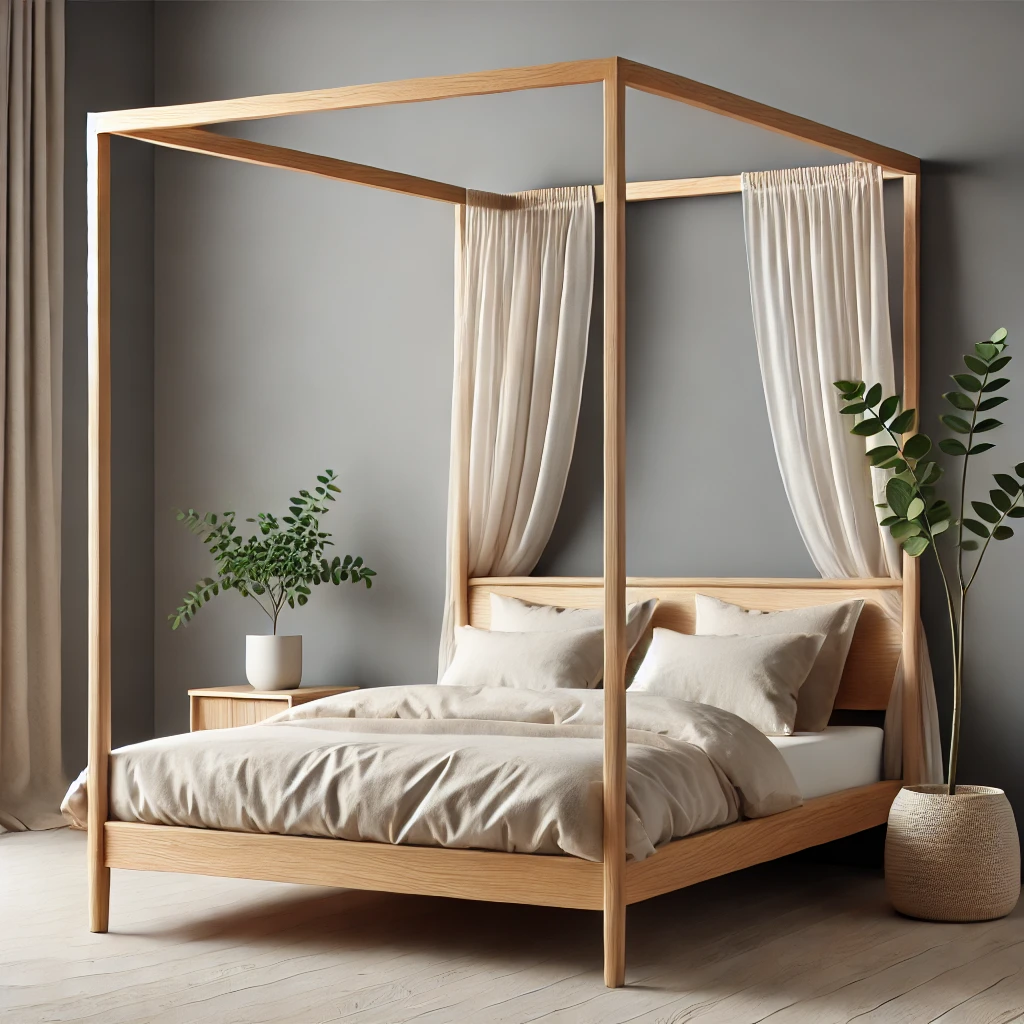
FAQ
Summary: Quick answers to common questions about sizing, curtains, and best materials for minimalist canopy frames.
- What size works best for minimalist canopy bed frames?
- A queen or king-size canopy bed offers strong visual impact while keeping lines clean; ensure at least 8–12 inches of clearance around the frame.
“`
- Do I need curtains on a minimalist canopy bed?
- No—most minimalist designs skip drapery to preserve the open silhouette. If you add fabric, choose sheer, neutral panels used sparingly.
- Which materials are most durable?
- Powder‑coated steel and solid hardwoods (oak, ash) balance longevity with a refined, minimalist look.
- How do I keep the look from feeling cold?
- Layer textures—linen bedding, wool throws, and wood accents—while staying within a monochrome or neutral palette.
Conclusion: Achieving Simplicity with Minimalist Canopy Bed Frames
A minimalist king-size canopy bed proves that less is more. By focusing on clean lines, functional design, and subtle accents, you can create a bedroom that feels open, airy, and effortlessly stylish. Whether you prefer a monochromatic palette, warm wooden tones, or sleek metal frames, minimalist canopy beds offer timeless elegance for any modern home. Embrace the beauty of simplicity and transform your bedroom into a peaceful sanctuary designed for rest and rejuvenation.
Related reading from Cozy Bed Quarters
- Queen Canopy Bed Ideas for Elegant Bedrooms
- Romantic Canopy Bed Ideas for a Luxurious Bedroom
- The Elegance of a King Size Canopy Bed
Other reading we found popular
- Minimalism Life — Creating Serene Spaces
- The Spruce — Bedroom Design & Materials
- Sleep Foundation — Bedroom Environment Tips

